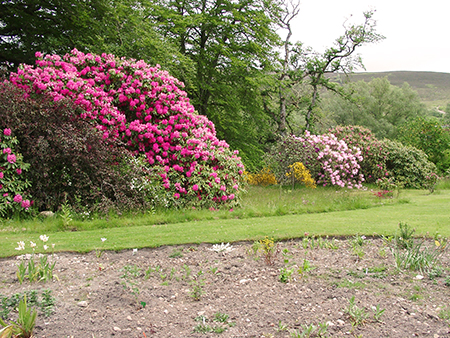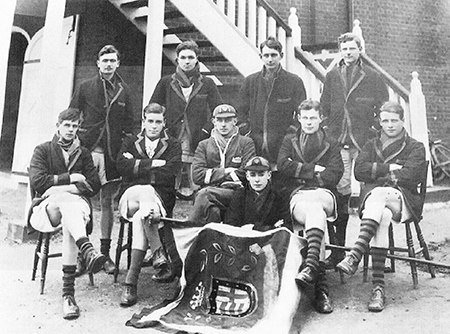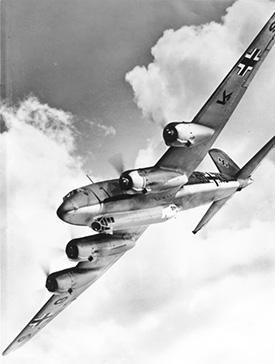

Happy Easter
A colourful Easter Egg story for you
Mirabile Dictu
In 2021, Amat Gardens will be open on the last weekend of May, Saturday 29th May and Sunday 30th May from 2pm to 5pm. Follow the signs past the house entrance to a car park by the river. Be careful of tree roots and please restrict to 3 people only at a time on the old garden bridge with no bouncing ! !
Sara has removed shrubs from the borders in the lawn, enlarged and added additional areas planted out with new varieties she has been bringing on. There will be plants for sale and tea, if allowed by Ms Sturgeon.
Sara organises it all with help at times from Donny and Jennifer. If you come and enjoy your visit and say so, it gives her huge pleasure. Sara’s mother is a gardener, but me, no! I dig out Ponticum and Western Hemlock planting instead Rhododendrons which form an excellent wind break, lots of colour and the deer don’t eat them, a big bonus.

Amat was owned by the Ross family for 300 years but was then bought by a Boer called Gervers, who became head of the diamond syndicate in London. His plaque is inside Croick church. Between the 1920s and 1940s, Amat was owned by the Conynghams from Northern Ireland. Amat was chosen as a dowry because of a rumour that the groom had gone through a marriage ceremony of a sort with a cook during an exceptionally good Irish party. Father-in-law gave consent if the couple kept their heads down at Amat until he sorted things.
My father-in-law is buried at Croick and my mother-in-law’s ashes are with him. He had been struck down in WW1 by gas. A very brave young man crawled into ‘No Man’s Land’ at night, found him still alive and recovered him.
When WW2 got going, my father joined up, leaving his brother to run the family foundry, making steel bomb casings for the war effort. Too old for the Battle of Britain, father was already a pilot, having taken part in the Air Races from the UK to Australia in the early 1930s and flown my mother around Europe on honeymoon in the mid 1930s. When WW2 got going, we moved to the Surrey woods while he commuted to the War Office. Part of the house was shot off so he then persuaded a kind guard to put my brother and me in the guard’s van of a full train just leaving for Oban where we shared our food with boxed pigeons.
My father, Geoffrey Shaw, had joined the Auxiliary Airforce when founded in the 1920s becoming a close friend of another Geoffrey, Geoffrey Ambler, from a West Riding Yorkshire family in the textile trade, who became my Godfather. I never knew him for years, as he disappeared and did not come back in 1945. One minute he and my father flew off together in old biplanes to TA camps at weekends, two engineers enjoying being taught by the government in cast-off RAF planes.
The next minute, Geoffrey Ambler was summoned to London by the Air Minister, Viscount Thurso. Thurso had been Churchill’s 2nd i/c in WW1 when Churchill returned to the trenches in command of a Scots battalion after the Dardanelles. I don’t know why he chose Ambler, perhaps because his name began with an A?
Thurso told him “We are about to have a ‘Do’ down here needing every RAF pilot and machine. I’m giving you the Air Security of Scotland”. Can there ever have been someone given, without warning, such a magnificent title, with absolutely no resources?

Viscount Thurso
Geoffrey took the train, past Ardgay, to see the Admiral in Scapa Flow. He said “I’m your Air arm, and need to know whenever you are in the Flow so that you have my complete attention with everything I can muster.” The Admiral was not impressed, “An airman and an auxiliary at that, I’m not telling you anything. Get out!”

Geoffrey Ambler (front row left)
Photo: Clare College, Cambridge
Geoffrey, an engineering graduate from Clare College Cambridge, who rowed three times in successful Cambridge boat races, 1924 to 1926, and was President of the University Boat Club, didn’t need to start with an argument. He got out, noting a farm building on the hillside, which he commandeered, installing an observer and a hot line.
He engineered his alarm clock to open the damper of his stove which made him tea to start his day at 5am. He transferred to the RAF proper, with suitable rank to command attention in future and ordered the uniform from his London tailor as the Ministry shuffled their papers.

Focke-Wulf Fw 200 C Condor
Attrib: Bundesarchiv,
Bild 146-1978-043-02 / CC-BY-SA 3.0
He organised forward landing sites halfway between Scapa Flow and the nearest Norwegian aerodromes. He decided he had approximately a year to be ready.
The Germans would not attack until they had annexed Norway and assembled an Armada for a full scale revenge attack to wipe out the Fleet.
They would use high flying reconnaissance flights by a FW Condor. The Condor was a four-engined aircraft designed as a long distance airliner. With a service ceiling of 20,000 feet it could overfly early spitfires with normally aspirated engines. With long endurance it could escape, if necessary, down the Irish Sea to neutral airfields on the Iberian peninsula.
Geoffrey probably wheedled a supercharged one-off Spitfire out of Rolls Royce. He visited the Chain Home radar people to ensure coverage of the Shetland and Norwegian coastlines in his timescale. He needed the Spitfire airborne and up to height within the 15 minutes the Condor would take to reach halfway.
He needed the radar operator to guide him close, even in cloud, to ensure destruction. He was a very methodical organiser. He visited the ‘Shetland Bus Service’ which put spies into Norway and recovered them whilst supplying the Germans with fish.
He visited the ‘Observers’ and became Commandant of the Corp. He had his Plan ready. However, as soon as the Battle of Britain was won he began to receive Spitfires.
By then, there was a Mk IX with supercharger able to top 40,000 feet. No-one in his wee band had flown one and there were no two seaters. So he collected and flew the first himself, with the instruction book open on his lap, learned what it could do and then taught his first chosen pilot.
He moved his HQ to the mainland at Wick with good rail and road connections. His Plan, based on a shoestring rapidly grew pairs of laces and if Hitler had attacked, I’m confident he would have received a surprise. However Hitler put off a reprisal attack on the Fleet and moved instead against Russia.

Spitfire LF Mk IX
Attribution: By Bryan Fury75 at fr.wikipedia CC-BY-SA-3.0
Geoffrey stayed with Fighter Command for the rest of the war and beyond. He was an ADC to the King and as SASO (Senior Air Staff Officer) devised instructions for pilots on the best way to discombobulate ‘Doodlebugs’. When finally demobbed he spent his demob leave qualifying on the jet planes just coming into service with the RAF, probably, the first Air Vice-Marshall to do something like that.
When the men of his small initial force did not get their pay, he famously paid them himself, surely the first AVM to have his own Airforce.
Back in Yorkshire, the textile industry was in trouble due to low operating-cost companies in the Far East. He invented and patented the “Ambler Superdraft” allowing speed of worsted yarn through the classic Spinning Jenny to be much faster. I hope this earned him a suitable retirement nest egg. More knowledge of him came to me from the Bishop and Lord Lieutenant at his memorial service in Bradford Cathedral in 1978.

Twin engine Comanche - J. G. Shaw
By coincidence, years later, the contractor building the oil terminal at Sullom Voe needed two experts to sort out a technical problem. I put them into my Twin Comanche and we arrived overhead Scatsta, a landing field, 20 miles north of Lerwick in the middle of the Shetlands, around dusk.
The controller told us we would have to hang around while the runway was swept due to a problem with the last flight. We wondered what that was, but we were eventually cleared to land. A quite severe crosswind component was minimised by heading several degrees off the runway lights.
Once safely on the ground I kept the engines going to create our own wind. Hearing that the forecast was for 80 mph winds approaching, I got the engineers into the car from the terminal but stayed with the plane, tying it down in the lee of the tower.
I’m pretty sure my godfather had been responsible for this airfield. Being cold, I went for a brisk starlit walk down the second runway, perfectly into wind, to see why it was not in service. The answer was a substantial new building sitting on it with one light shining from a downstairs window.
I couldn’t resist a peep; inside was a big man with a cigar surrounded by recording machines and massive tape spools. I think he was listening to noises detected by hydrophones strung across the sea toward Iceland.
Significantly, RAF Scatsta remained an operational field right up to June 1999.
From maps I could see the logical route, for an aviator from Wick to Scatsta, would be to follow the coast north, turning right at John O’ Groats. The first island one then overflies is Stroma, the lovely name Geoffrey chose for his daughter.
LEGAL INFORMATION
The information and material on this site is provided in good faith for general information only and no part shall form any part of a contract. Amat Estate and its agents assume no responsibility for the accuracy of any particular statement and accept no liability for any loss or damage which may arise from reliance upon the information contained on this website. Links to other websites from these pages are for general information only and Amat Estate and its agents accept no responsibility or liability for access to other material on any website which is linked from or to this website.
© 2021 amatsalmon.com